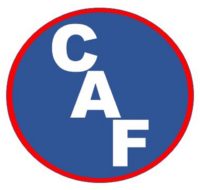A/B Foam Concentrate is a replacement for the banned flourine compound Class B foam concentrates.
A/B Foam works on both Class A fuels and Class B fuels. But, there are limitations.
First – there is no standard for the formulation of A/B foams. UL-162 is the standard utilized for the testing of foams on Class B fuels. There is no standard for foams used on Class A fuels.
What does this mean? The formulas for A/B foams can and will vary as will the effectiveness on the Class A fuels.
For Class B fuels, the products should be tested by a third party testing company as compared to UL-162. The important safety issue to know reference the Class B Concentrate world is that the finished foam does not flow the same and requires more concentrate to cover a B-Fuel. The bubbles will not spread out and must be applied to the entire area. Also, it is critically important to know that similar to the new Class B concentrates, A/B foam concentrate is NOT self-healing. Any break in the bubble blanket can result in the release of flammable vapors. A/B foam does not make a film over the hydrocarbon fuel. The flammable vapors are suppressed soley by the bubble blanket.
All of the Class B Concentrate page’s warnings also apply to A/B Concentrates.
As stated on the Class B page, using A/B concentrate on Class B fuels requires specialized, intensive training and practice.

For Class A fuels, the A/B foam market is wide open with many products available. Since there is no specific standard, it is anybody’s guess as to which product works best.
Remember, for the best action on Class A fuel, a foam needs to have reduced surface tension (soaks in), be carbon loving (sticks to Class A fuel), and make bubbles (increased surface area).
The only way to know for sure if an A/B marketed product will do the same is by using the DIY – Performance evaluation. Get some of the product and Play With It & See!!!
Some of the A/B concentrates have higher viscosities than Class A concentrates. Make sure the viscosity of the product you are considering meets the specs of your foam proportioning system.
As for A/B on a Class A fire, word is out that A/B concentrates are not quite as effective as Class A Foam. Some word claims that A/B foam is excellant on both A & B fires. But, there are not yet scientific tests to prove either statement. This is where the DIY – Performance Evaluation becomes critical. Only you can decide what is best for your department. If you feel the B side of A/B foam will do the job on Class B fires, then evaluate it on Class A fire. If it works better than the Class A Foam, you have a winner. If it does not, please read the following. Remember to check the QPL. A/B foams may not be listed as approved safe by wildland standards.
NOTE: While the Class B foam market sorts out the issues, specs and acceptable Class B products, CompressedAirFoam.com recommends continuing with the use of Class A Foam concentrates for the best effect on Class A Fire and then purchasing and DIY – Performance Evaluating small amounts of the available Class B capable foams including A/B concentrates. Keep in mind that Performance Evaluation means getting out and working with the product to see what it will and will not do. Research is showing that A/B foams do not work the same as the banned flourine B-foams. Firefighters can be both caught off guard and possibly put into a dangerous situation if they are not aware of the differences and try to test a foam product for the 1st time on a real emergency. DO NOT ever take a sales person’s word on any product. Get out and work with it. DO NOT put the product on the engine and assume it will do what you want on the first emergency.
Here are several links that might be useful in your research into a Class B Foam program. Note that CompressedAirFoam.com does not necessarily endorse these sites. It is up to the department to determine (through research, evaluation, training and practice) if the information is of use.





































